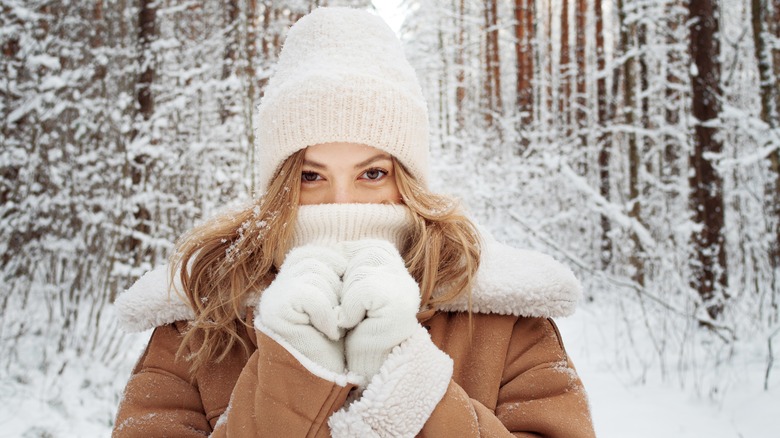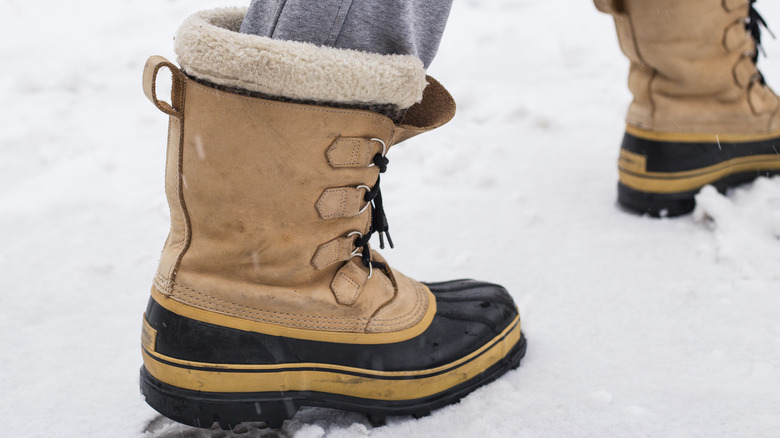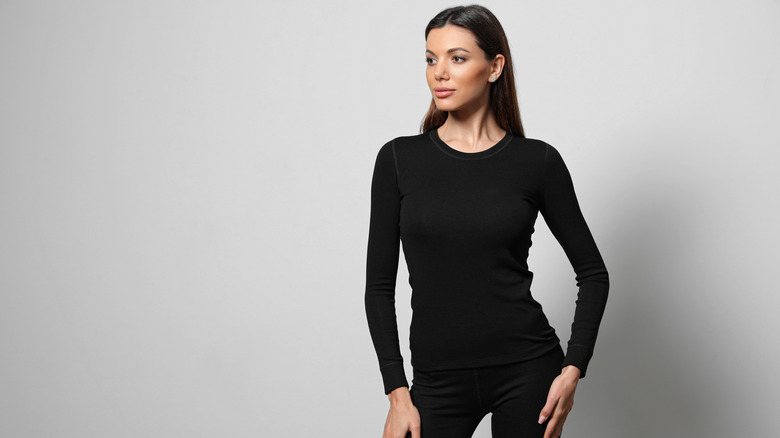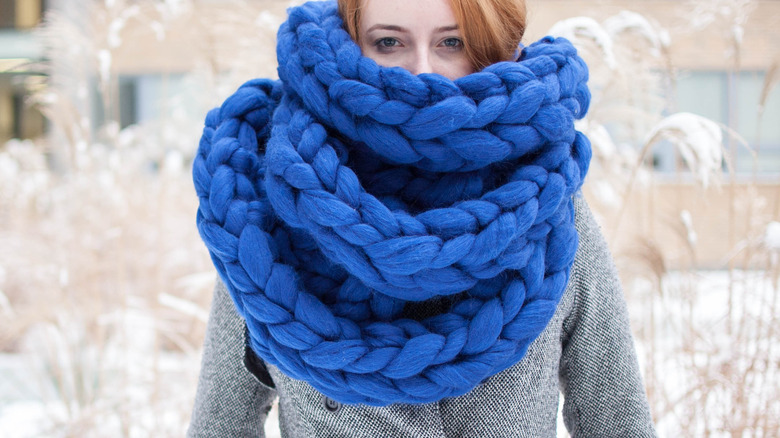Tips For Dressing For Warmth When It's Going To Be Extra Cold Outside
The next few months are some of the coldest of the year. Is your wardrobe prepared for frigid temperatures? Not only can it be uncomfortable to brace the cold without proper attire, but it can also be dangerous. "Extreme cold" has different meanings in different regions, but can generally be described at any temperature near or below freezing.
According to the CDC, the two biggest dangers that come with extreme cold are frostbite and hypothermia. Frostbite freezes the skin and underlying tissue, which can cause a variety of complications, including amputation, according to Mayo Clinic. Hypothermia is another medical emergency where your body loses heat faster than it can create it. Either of these situations can cause life-threatening complications and can be prevented with proper protective clothing. Wondering what you can wear to look chic even when it's chilly this winter? We've compiled six tips for dressing to stay warm when extreme cold is affecting your area.
Dress from head to toe
Our mothers weren't telling the truth when they said that we lose 80% of our body heat through our heads, but they may have been on to something. Dr. Richard Ingebretsen tells WebMD "If you don't have a hat on, you lose heat through your head, just as you would lose heat through your legs if you were wearing shorts." So it is no wonder that people feel as if they are losing heat from their heads if they are not properly covered. You can lose heat from any part of your body, which is why it's important to ensure all areas are covered.
Ensure your coat and shoes are water-resistant
According to Middlesex Health, cold water on the skin transfers heat from the body, making heat loss from the body much more rapid when you are wet. This is why it is important to make sure at least some of the pieces in your outfit are water-resistant. Most easily you will find water-resistant coats and shoes. A water-resistant shoe will prevent wet feet from stepping in snow and puddles, whereas a water-resistant coat will protect you from melting snowflakes.
Tight-fitting sleeves are essential
Open or bell sleeves are a frigid winter "no-no." Tight-fitting clothing or compression clothing, in general, are best for winter — specifically compression long sleeves. Long sleeves that are tight leave no room for a cold breeze to sneak up the arm. Another benefit of compression long sleeves is that compression clothing is great for regulating body temperature. According to Compression Athlete, another "helpful factor is the compressive pressure applied to your muscles, which stabilizes and reduces excess vibration and shivering." This will ultimately help save your energy.
Strive for warmth from the very beginning
Start from the beginning when looking for warmth in your winter wardrobe. According to REI, a base layer is necessary to wick away moisture in a frigid weather outfit. Otherwise, your body can be subjected to frostbite due to moisture. While it may be tempting to pick thicker base layers, since our brain often correlates thicker fabric with warmth, it may benefit you to choose thin and tight base layers. A base layer of underwear that takes up less space, but compresses and wicks moisture, will be the most beneficial.
Certain fabrics are best
Specific fabrics are best for certain layers of your winter outfit. According to the CDC "wool, silk, or polypropylene inner layers of clothing will hold more body heat than cotton." Synthetic fabrics or wool fabrics are often best for your base layer, as they wick away more moisture. This helps avoid unnecessary wetness from sweat while also holding in body heat. For your middle layer, it is best to choose insulation fabrics, such as fleece, down-insulated jackets, and synthetic insulated jackets. Finally, for your outer layer, you should choose a jacket made from water-resistant materials.
Don't forget the face
When it comes to staying warm, the face is easily glanced over as an area to cover — yet it's extremely important. According to The Red Cross, covering your mouth from the cold air will protect your lungs from these extremely cold temperatures. Loosely covering your nose can help as well. Most often, this is done with a traditional, thick scarf. This year, a balaclava seems to be a popular choice as well. Another option is wearing a fitted face mask for the mouth and nose to keep warm air in.






